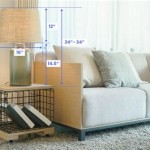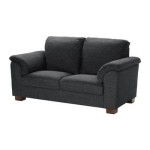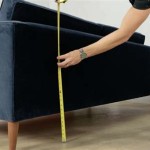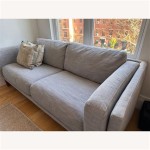How to Repair a Sofa Bed Frame: A Comprehensive Guide
Sofa beds offer a versatile solution for accommodating guests without sacrificing valuable living space. However, the intricate mechanisms and sturdy frames of these convertible pieces of furniture can, over time, succumb to wear and tear. A damaged sofa bed frame not only compromises the functionality of the bed but can also affect the comfort and aesthetic appeal of the sofa. This article provides a comprehensive guide to diagnosing and repairing common issues affecting sofa bed frames, enabling individuals to extend the lifespan of their furniture and avoid costly replacements.
Before embarking on any repair work, a thorough assessment of the damage is crucial. This involves a detailed inspection of all frame components, including wooden supports, metal brackets, hinges, and springs. Identifying the specific type and extent of the damage is the first step toward a successful repair. Safety should also be a paramount concern. Disconnect any electrical components, such as those associated with reclining mechanisms, and ensure that the sofa bed is placed on a stable, level surface before commencing any work.
Identifying Common Sofa Bed Frame Problems
Several common problems can plague sofa bed frames. These issues often manifest in specific ways, such as difficulty in opening or closing the bed, excessive creaking or squeaking, uneven support when the bed is extended, or visible damage to the frame's structural components. Recognizing the underlying cause of these symptoms is essential for selecting the appropriate repair strategy.
One frequent issue is broken or weakened wooden supports. These supports, typically made of hardwood or engineered wood, provide the primary structural integrity of the frame. Over time, they can crack, splinter, or break under the weight of repeated use. The location and severity of the damage will determine the necessary repair method. Minor cracks might be reinforced with wood glue and clamps, while more significant breaks may require replacement of the entire support.
Another common problem involves loose or broken metal brackets and hinges. These components connect the various sections of the frame and allow the sofa bed to transform between sofa and bed configurations. Constant use and the stresses of movement can cause these brackets to loosen, bend, or even break. In many cases, tightening loose screws or replacing damaged hardware is sufficient. However, if the metal is severely bent or broken, welding or replacement of the entire bracket might be necessary.
Worn or broken springs are yet another common issue. Sofa beds often utilize a network of springs to provide support and cushioning. Over time, these springs can lose their tension, causing the bed to sag or creak. Broken springs can also create uncomfortable pressure points. Depending on the type of spring system, individual springs can often be replaced. However, if a significant number of springs are damaged, replacing the entire spring assembly may be a more practical solution.
Finally, issues with the folding mechanism itself can arise. This mechanism, typically composed of levers, gears, and hinges, allows the sofa bed to smoothly transition between its two configurations. Over time, these components can become misaligned, corroded, or damaged, leading to difficulty in opening or closing the bed. Lubricating the mechanism with a suitable lubricant can often resolve minor issues. However, more severe problems may require disassembly and repair or replacement of specific components.
Tools and Materials Required for Sofa Bed Frame Repair
Having the right tools and materials on hand is essential for a successful sofa bed frame repair. The specific tools and materials required will vary depending on the type of damage and the repair method chosen. However, some common items are almost always needed.
A basic set of hand tools is essential. This should include screwdrivers (both Phillips head and flathead), pliers, wrenches (adjustable and socket), a hammer, and a measuring tape. Screwdrivers are necessary for tightening or removing screws, while pliers and wrenches are used for gripping and turning nuts and bolts. A hammer is helpful for tapping components into place, and a measuring tape is used for accurately measuring dimensions when replacing parts.
Power tools can significantly speed up and simplify the repair process. A power drill with various drill bits is useful for creating pilot holes and driving screws. A circular saw or jigsaw can be used for cutting wood to size, while a sander can be used for smoothing rough edges. Care and caution must be used when operating power tools.
Various fasteners and hardware will be needed. This includes screws, bolts, nuts, washers, and wood glue. Screws and bolts are used to secure components together, while nuts and washers provide a more secure and stable connection. Wood glue is essential for repairing broken wooden supports. It is important to select fasteners and hardware that are appropriate for the specific application and that are of sufficient strength to withstand the stresses of use.
Replacement parts may also be necessary. This could include wooden supports, metal brackets, hinges, springs, or even entire sections of the frame. Identifying the correct replacement parts is crucial for a successful repair. This may involve contacting the manufacturer of the sofa bed or searching online for compatible components. When purchasing replacement parts, it is important to choose high-quality items that are designed to withstand the rigors of regular use.
Safety equipment is essential for protecting oneself from injury during the repair process. This should include safety glasses, gloves, and a dust mask. Safety glasses protect the eyes from flying debris, while gloves protect the hands from cuts and abrasions. A dust mask protects the lungs from inhaling dust and other particles. When working with power tools, it is also important to wear hearing protection.
Step-by-Step Repair Techniques for Common Issues
Once the damage has been assessed and the necessary tools and materials have been gathered, the actual repair work can begin. The following sections outline step-by-step repair techniques for several common sofa bed frame issues.
Repairing Broken Wooden Supports: Begin by removing any damaged sections of the support. If the break is clean, wood glue can be applied to both surfaces. Clamp the pieces together securely and allow the glue to dry completely, following the manufacturer's instructions. For added strength, consider reinforcing the repair with screws or metal brackets. If the support is severely damaged, it may need to be replaced entirely. Measure the dimensions of the old support and cut a new piece of wood to the same size. Secure the new support to the frame using screws and wood glue.
Fixing Loose or Broken Metal Brackets and Hinges: Start by tightening any loose screws. If the screws are stripped, replace them with screws of the same size but with a slightly larger diameter. If the bracket or hinge is bent, attempt to straighten it using pliers or a hammer. If the bracket or hinge is broken, it will need to be replaced. Remove the old bracket or hinge and install the new one, ensuring that it is properly aligned and securely fastened.
Replacing Worn or Broken Springs: Disconnect the old spring from the frame. This may involve using pliers to remove clips or hooks. Install the new spring, ensuring that it is properly positioned and securely fastened. If replacing multiple springs, work systematically to ensure that all springs are correctly installed. In some cases, replacing the entire spring assembly may be necessary. This involves removing the old assembly and installing the new one, following the manufacturer's instructions.
Addressing Issues with the Folding Mechanism: Begin by lubricating the mechanism with a suitable lubricant, such as WD-40 or silicone spray. This can often resolve minor issues, such as stiffness or squeaking. If the mechanism is misaligned, attempt to realign it by adjusting the screws or bolts that hold it in place. If the mechanism is damaged, it may be necessary to disassemble it and repair or replace the damaged components. This is a more complex repair that may require specialized tools and expertise.
After completing the repair, thoroughly test the sofa bed to ensure that it is functioning properly. Open and close the bed several times to ensure that the mechanism is smooth and stable. Check for any signs of weakness or instability. If any issues are detected, address them immediately to prevent further damage.
Regular maintenance can help to prevent future problems with the sofa bed frame. This includes periodically tightening loose screws, lubricating moving parts, and avoiding excessive weight or stress on the frame. By taking proper care of the sofa bed, individuals can extend its lifespan and enjoy its benefits for many years to come.

How To Fix A Sagging Couch 14 Steps

Repairing A Ed Part Of Sofa Frame D Oh I Y

4 Problems With Sofa Beds And Solutions For Those

Understanding Sofa Bed Mechanism Types Made To Last Blog

Can My Sofa Be Repaired Take A Look At These Instructions Ronix Mag

Fix A Broken Rp Couch

Our Home From Scratch

Sofa Couch Chaise Sectional Frame Upholstery Disassembly Assembly Break Down Take Apart No Fit Bed Repair Chair

How To Disassemble A Sleeper Series Sofa

Why Your Sofa Bed Mattress Is Uncomfortable And How To Fix It








